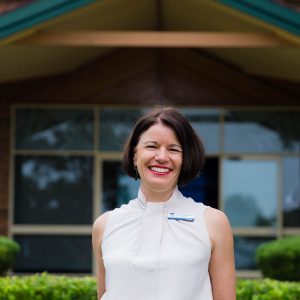Published on March 4, 2022
Last week I read this article in the Conversation and I would encourage all parents to read it with their children. It is about remembering to question what we see and hear, even when it comes from reputable sources.

As the tragic events unfolded in the Ukraine last weekend, fake news spread like wildfire and even the SMH editor was caught in the turmoil (see Monday evening’s Media Watch for an amusing account of how media, including SMH, were “caught out”). This became a good example of the fast, reactive thinking that often plagues our responses to local, national and world events. Slowing down our thinking is challenging, especially when we are bombarded with information constantly through social media. But our children need us to stop and process what we are seeing, hearing and reading much more thoughtfully than we often do. Afterall misinformation has, and will continue to be used by some of the most brutal dictators in history. Propaganda fuelled the rise of Hitler in Nazi Germany and Mussolini in Italy. Propaganda is a key tool used by terrorist organisations to recruit vulnerable young people. Misinformation can cause harm on a national or global scale, and at the individual level. On an individual level, accepting as truth the latest post on Instagram, Snap Chat or Tik Tok can cause irreparable harm to the mental and physical health of the young person who is the target of this misinformation.
Misinformation hurts and in the age of social media it doesn’t go away. It undermines a critical engagement with ideas and information and our capacity to focus on our shared humanity. It impacts our ability to be compassionate, open and to actively listen to others.
What is the answer to misinformation and “fake news”? Actively committing to the truth and challenging complacency in our thinking. This involves teaching our young people how to question the veracity of what they are seeing and hearing on social media and the news both at school and at home. The Conversation article I noted above recommends 5 key steps that will get us part of the way there:
- Examine the metadata – “the details about how and when the video was created”
- Consult a fact-checking source – there are great tools that we can encourage our students/children to use by using them ourselves
- Search more broadly – don’t rely on one source
- Look for inconsistencies – sometimes the content of a photo or video doesn’t match the caption or text explaining it
- Ask yourself some simple questions – you can have fun doing this at home when you are watching the news as a family. The “5Ws and H” are always good to keep in mind (who, what, when, where, why and how).
Above all, try to consume the news together as a family. The more you do this and talk about it as a family, the more you might be able to challenge your own thinking and that of your children. We want to help our children become critical consumers of knowledge and more accepting of diverse points of view. In turn, this helps us work together to create a better world where our young people are truth-seekers who are critically engaged and compassionate.
My last thought on this comes from a conference I attended on Tuesday where I listened to Yong Zhao, a provocative Chinese-born academic working in the USA. He asked the audience: are we here to impose a curriculum or to teach children? As we face the pressure to cover state and national curriculum, it can be hard to take the time to teach critical thinking. But it is essential that we find the time to do this. This is where the IB frameworks – PYP, MYP, IBCP and IB Diploma – are powerful because they bridge the divide between teaching knowledge and understanding and deep conceptual and critical thinking.
At HVGS we have the frameworks in place to support our students to become critical and engaged consumers of knowledge who have the courage to question their own thinking and that of others.

